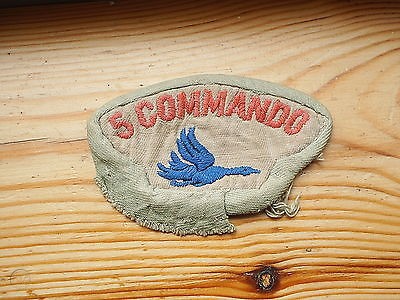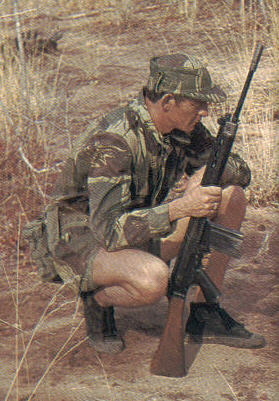
Mad Mike Hoare.
I first read about Mad Mike Hoare in the pages of Soldier of Fortune magazine back in the eighties. I had seen The Wild Geese back then, but really had no idea about the background and it’s relation to MMH. Now I know. The title of the movie was inspired by the 5 Commando patch that MMH wore, which also had a flying goose. This reference was to the Irish soldiers who left to serve in European armies in the 16th, 17th and 18th centuries.

An original 5 Commando Patch.
What I wanted to do in this post is present the various eulogies out there, from some of the top figures and publications in this industry that were inspired by Hoare. On the FB links, definitely click on those and read the comments and support.
The first is from his son, Chris Hoare. Chris wrote the last book and biography on his father, and it is definitely an excellent tribute to his father’s legacy. MMH also wrote a ton of books about his exploits, so there is that resource as well. Many of the well wishers on FB and elsewhere, found MMH through his books and via the numerous articles written about him over the years.
Chris also did some youtube interviews and podcasts and has an excellent website to promote the book and his father’s life. Definitely worth your time to check out.
Next up is Soldier of Fortune. They have definitely been an influence on many in this industry, to include myself, and here is what they had to say.
One of the best eulogies I read was from another industry great, Eeben Barlow. Here is his statement on Facebook. Eeben actually got a chance to meet MMH at his last birthday!
Of course here is the trailer of the movie The Wild Geese. Richard Burton’s character was said to be influenced by MMH, and MMH was an advisor on the film. Pretty cool. I think a modern film actually based on MMH is in order, and it would make for some fascinating film if done correctly. Rest in peace… –Matt

